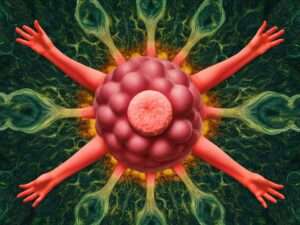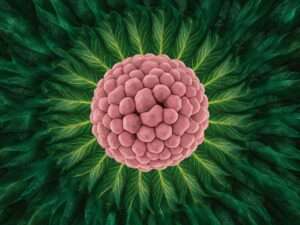Granuloma Inguinale: A Comprehensive Guide to the Rare STI
Granuloma inguinale, also known as donovanosis, is a rare sexually transmitted infection (STI) that, while uncommon in many parts of the world, can have significant health impacts if left untreated. In this comprehensive guide, we’ll explore everything you need to know about granuloma inguinale, from its causes and symptoms to diagnosis, treatment, and prevention strategies.
Butyric Acid: The Gut-Friendly Compound You Need to Know About

Table of Contents
ToggleWhat is Granuloma Inguinale?
Granuloma inguinale is a bacterial infection caused by Klebsiella granulomatis (formerly known as Calymmatobacterium granulomatis). This infection primarily affects the genital and anal areas, causing progressive ulcerative lesions that can spread to surrounding tissues if not treated promptly.
While rare in developed countries, granuloma inguinale is still endemic in certain parts of the world, including:
• Parts of India
• Papua New Guinea
• The Caribbean
• Central Australia
• Southern Africa
According to the Centers for Disease Control and Prevention (CDC), fewer than 100 cases are reported annually in the United States, with most of these being imported cases from endemic areas.
Syphilis Testing: A Comprehensive Guide to Diagnosis and Screening

The History and Epidemiology of Granuloma Inguinale
Granuloma inguinale was first described in 1882 by Kenneth McLeod in Calcutta, India. The causative organism, however, wasn’t identified until 1905 when Charles Donovan observed the characteristic intracellular inclusion bodies, now known as Donovan bodies.
Historically, the disease was more prevalent globally, but improved hygiene, better access to healthcare, and effective antibiotic treatments have significantly reduced its incidence in many parts of the world. However, it remains a concern in resource-limited settings and among certain populations.
Oral Gonorrhea: A Comprehensive Guide to Symptoms, Diagnosis and Treatment

Transmission of Granuloma Inguinale
Granuloma inguinale is primarily transmitted through:
• Sexual contact with an infected person
• Skin-to-skin contact with infected areas
Unlike some other STIs, granuloma inguinale is not highly contagious. It typically requires repeated exposure or trauma to the skin for transmission to occur. The exact incubation period can vary but is generally between 1 to 12 weeks after exposure.
Hepatitis A, B, and C: Understanding the Differences and Similarities
Symptoms of Granuloma Inguinale
The hallmark symptom of granuloma inguinale is the development of painless, progressive ulcerative lesions. The infection typically progresses through several stages:
1. Initial Stage:
• Small, painless papules or nodules appear on the genitals or perianal area
• These lesions are often red or pink in color

2. Ulcerative Stage:
• The papules develop into shallow ulcers
• Ulcers have a beefy-red appearance and bleed easily when touched
• Despite their appearance, these ulcers are usually painless
3. Advanced Stage:
• Without treatment, ulcers can enlarge and spread to surrounding tissues
• In severe cases, lesions can cause tissue destruction and scarring
It’s important to note that symptoms can vary between individuals, and some people may be asymptomatic carriers of the infection.
Complications of Untreated Granuloma Inguinale
If left untreated, granuloma inguinale can lead to several complications:
• Tissue Damage: Extensive scarring and tissue destruction in the genital and anal areas
• Secondary Infections: The open ulcers can become infected with other bacteria
• Lymphedema: Swelling of the genitals due to damage to the lymphatic system
• Genital Mutilation: In severe cases, the infection can lead to the destruction of genital tissues
• Increased HIV Risk: The open sores can increase the risk of HIV transmission and acquisition
Diagnosing Granuloma Inguinale
Diagnosing granuloma inguinale can be challenging due to its rarity in many regions and its similarity to other genital ulcer diseases. The diagnosis typically involves:
1. Clinical Examination:
• A healthcare provider will examine the lesions and take a detailed medical history
2. Microscopic Examination:
• A tissue sample (biopsy) or smear from the lesion is examined under a microscope
• The presence of characteristic Donovan bodies (rod-shaped organisms inside host cells) confirms the diagnosis
3. Polymerase Chain Reaction (PCR) Testing:
• This molecular test can detect the DNA of Klebsiella granulomatis
• It’s more sensitive than microscopic examination but may not be widely available
4. Differential Diagnosis:
• Other conditions that may need to be ruled out include syphilis, chancroid, and genital herpes
Treatment Options for Granuloma Inguinale
Granuloma inguinale is treatable with antibiotics. The CDC recommends the following treatment regimens:
First-line Treatment:
• Azithromycin 1 gram orally once per week for at least three weeks and until all lesions have completely healed
Alternative Treatments:
• Doxycycline 100 mg orally twice daily for at least three weeks and until all lesions have healed
• Ciprofloxacin 750 mg orally twice daily for at least three weeks and until all lesions have healed
• Erythromycin base 500 mg orally four times daily for at least three weeks and until all lesions have healed
• Trimethoprim-sulfamethoxazole one double-strength tablet orally twice daily for at least three weeks and until all lesions have healed
It’s crucial to complete the full course of antibiotics, even if symptoms improve. Follow-up care is essential to ensure the infection has been fully cleared.
Prevention Strategies
Preventing granuloma inguinale involves similar strategies to other STIs:
1. Practice safe sex:
• Use condoms consistently and correctly during all sexual activities
• Consider dental dams for oral sex
2. Regular STI screenings:
• Especially if you’ve traveled to endemic areas or have multiple partners
3. Open communication:
• Discuss STI history and testing with sexual partners
4. Seek prompt medical attention:
• If you notice any unusual genital lesions or symptoms
5. Maintain good hygiene:
• Proper genital hygiene can help reduce the risk of infection
Granuloma Inguinale and Pregnancy
Granuloma inguinale during pregnancy can lead to complications, including:
• Vertical transmission to the fetus
• Increased risk of preterm birth
• Potential obstruction of the birth canal due to genital lesions
Pregnant women with suspected granuloma inguinale should seek immediate medical attention for appropriate diagnosis and treatment.
Global Health Implications
While rare in many parts of the world, granuloma inguinale remains a public health concern in endemic areas. The World Health Organization (WHO) includes it as one of the neglected tropical diseases that disproportionately affect resource-limited populations.
Efforts to control granuloma inguinale include:
• Improving access to healthcare in endemic areas
• Enhancing diagnostic capabilities
• Implementing effective treatment and prevention strategies
• Raising awareness about the disease among healthcare providers and at-risk populations
Conclusion
Granuloma inguinale, while rare in many parts of the world, remains a significant health concern in certain regions. Its ability to cause extensive tissue damage if left untreated underscores the importance of early diagnosis and appropriate treatment. By understanding its symptoms, transmission, and prevention strategies, you can better protect yourself and your partners.
Remember, if you suspect you may have been exposed to granuloma inguinale or any other STI, don’t hesitate to seek medical advice. Early detection and treatment are crucial in preventing complications and further transmission.
Reference to External Sources:
1. Centers for Disease Control and Prevention (CDC) – Granuloma Inguinale:
2. World Health Organization (WHO) – Neglected Tropical Diseases:
3. National Organization for Rare Disorders (NORD) – Granuloma Inguinale:
4. DermNet NZ – Donovanosis:
5. MedlinePlus – Granuloma Inguinale:


